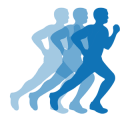An AC joint sprain refers to an injury impacting the ligaments connecting the acromioclavicular joint at the shoulder’s top.
Symptoms
AC joint sprains often result from falling on an outstretched arm.
Symptoms include:
- Top-of-the-shoulder and collarbone-end pain
- Initial extensive shoulder discomfort later concentrated on top
- Increased pain during sideways and overhead arm movement
- Noticeable deformity in severe cases
- Top-of-the-shoulder tenderness
- Swelling over the AC joint.
Assessment tests
A professional therapist may perform various specialized tests for diagnosis, including:
- Distraction Test (Piano Key Sign): The therapist pulls down on the athlete’s relaxed arms and observes for a ‘hollowing out’ behind the joint.
- Crossover Test: The therapist moves the athlete’s arm across the body while compressing the joint.
What is an AC joint sprain/separation?
An Acromioclavicular (AC) joint sprain involves the tearing or stretching of ligaments connecting the clavicle to the shoulder blade’s top.
Anatomy
The Acromioclavicular (AC) joint is where the clavicle’s outer end and the scapula’s acromion process meet, connected by the acromioclavicular ligament. A minor sprain stretches this ligament.
In severe cases, not only does the acromioclavicular ligament rupture, but also the coracoacromial and coracoclavicular ligaments. This leads to an upward-protruding clavicle, causing a deformed appearance of the shoulder.
Causes
A fall on an outstretched arm generally causes this condition, as the impact force travels from the arm to the shoulder joint.
How bad is my AC joint sprain?
AC joint injuries are graded 1-6 using the Rockwood scale, determined by ligament damage and acromion-clavicle spacing.
- Grade 1: Simple sprain, minor ligament damage, no bone separation.
- Grade 2: Rupture of the acromioclavicular (AC) ligament.
- Grade 3: Rupture of both AC and coracoclavicular (CC) ligaments, often with clavicle displacement upwards.
- Grade 4: Posterior displacement.
- Grade 5: Greater upward displacement than Grade 3, 3-5x normal coracoclavicular space. Possible step deformity.
- Grade 6: Full rupture of both AC and CC ligaments with clavicle displacement downwards.
Treatment for AC Joint Sprains
Apply the PRICE principles (rest, ice, compression, elevation) immediately after an AC joint injury. Untreated severe cases can lead to a permanent shoulder lump.
Cold Therapy
To minimize pain and swelling, use a cold compress and compression wrap. Start with 10 minutes every hour, then reduce as symptoms improve.
Rest
A sling can immobilize the shoulder and relieve pain by supporting the arm’s weight.
Taping
Taping stabilizes the healing joint and helps prevent deformity, especially in severe cases involving clavicle displacement.
Shoulder Supports
A quality shoulder brace, allowing downward AC joint pressure, can be beneficial.
Sports Massage
Post-acute phase, a cross-friction massage can soften scar tissue.
Medication
Doctors may prescribe anti-inflammatories, like ibuprofen, for pain and inflammation.
Electrotherapy
For severe cases, physiotherapists may use ultrasound or TENS for pain relief.
Surgery
Grade 1, 2, and 3 injuries usually avoid surgery. Grade 4, 5, and 6 injuries and unresponsive grade 3 sprains typically require it. Untreated, mis healed injuries can increase joint wear and future problems.
